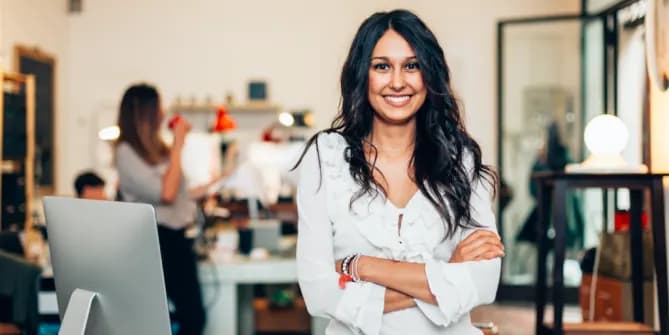What Does Diversity Mean to You? 13 Female CEOs Respond
What does diversity mean? We are all individuals with inimitable backgrounds and many, many differences. Diversity and inclusion efforts are about gender, race, age, sexual orientation, ability, geography, points of view, education, socioeconomic levels and every imaginable factor that makes a person’s identity.
Efforts for diversity and inclusion are obviously needed everywhere, especially among employees in workplaces.
More than 350 CEOs have signed onto CEO Action Pledge for Diversity and Inclusion, calling itself “the largest CEO-driven business commitment to advance diversity and inclusion within the workplace. This commitment is driven by a realization that addressing diversity and inclusion is not a competitive issue, but a societal issue.”
Noting equality and diversity efforts from Paradigm for Parity, Take the Lead and many other movements to push for culture change in all workplaces, it seems fitting to examine what female CEOs and other C-suite leaders across industries say about the call to action for diversity, inclusion and fairness in the workplace. Because a diverse workforce leads to success.
1. “I had not thought about diversity and gender equality driving productivity, but that’s the point. Organizations that have balanced gender teams drive better return on equity than those that’s don’t. There’s a hard reason for doing it,” says Jayne-Anne Gadhia, CEO of Virgin Money, and the longest serving CEO of any European bank.
2. "We should be much more proactive about sponsoring and supporting all types of diversity to get to the senior leadership positions. You cannot be a modern employer in an industry that should be future facing and modernizing arguably much more aggressively than it is without being very demanding on this topic,” Emma Walmsley, GlaxoSmithKline CEO, and the first woman CEO of major pharmaceutical company, told Business Insider.
3. “I don’t think there any secrets, just that you hire the best people you can and understand your limits. If I have a success, it is my success and my team’s success,” says CEO of Fuse.It, Liat Sade-Sternberg.
4. “I see a lot of things where we are moving the dial a bit at a time. On a global scale, board diversity is about 18 percent, so clearly this is a problem of opportunity. You need structured debates and perspectives otherwise you have groupthink and confirmation bias,” says Michele Wucker, author and CEO of thegrayrhino.com
5. “There were 10 men and one woman on my team at first. I had to go with the right person at the right time. But now we have greater diversification and are putting females on our executive team,” says Denise Thomas, co-founder, CEO and chairman of Apple Pie Capital. “We need more women entering the field.”
6. "Unless companies change their approach to diversity from top to bottom, they will never be able to retain top talent and Latinos will never rise to leadership positions. Our focus is on what companies can do now and the steps to get there," says Patricia Mota, president and CEO of The Hispanic Alliance for Career Enhancement.
7. “It cannot just be an introduction from the head of diversity. It has to be what the CEO cares about and the leadership team cares about. Until that happens, it doesn’t matter,” says Kristi Riordan, chief operating officer at Flatiron School, an outcomes-focused coding bootcamp offering software engineering education in New York and online.
8. “You see groups demanding people be held accountable for they treat women, pay, diversity numbers—it is all much more forceful. You also see more junior women see that tech is more attractive as a career choice,” says Maia Bittner, tech startup investor, advisor, enginner an Pinch co-founder.
9. “You have better returns with diverse teams. Making change and taking action is about men and women together, about community, family and the workplace,” says Karen Gordon, WE Design Think Founder and Chief Design Facilitator.
10. “We are hardwired to connect, to share ideas, to combine resources, and yes, to change the world. When you bring together a diverse group of women, magic happens. We’re influenced by each other’s take on things, and new ideas begin to evolve. We draw from each other’s energy," says Nancy D. O’Reilly, author, founder and president of Women Connect4Good, Inc. "Something entirely new is born, and it’s often far greater than anything one person could have come up with alone."
11. "Paradoxically, diversity is both companies’ greatest opportunity for growth and innovation and their greatest fear because their leadership often lacks the skills or sensibilities to facilitate the inherent value of diversity and inclusion,” says Gloria Feldt, president and co-founder of Take The Lead.
12. “There is no way to get the most creative ideas and the best solutions from people with the same backgrounds,” says Peggy Yu, chief operating officer of Startup Institute.
13. "The more diversity we have and the more perspectives, we will come out with better innovations and solutions,” says Eva Wong, co-founder and chief operating officer of Borrowell.
A diverse group should capitalize on their differences and develop and progress with the unique perspectives of everyone; those perspectives don't have to be divisive.
A version of this post appeared in Take the Lead.
--
Michele Weldon is editorial director of Take The Lead, a senior leader with The OpEd Project, author and journalist. Her most recent book is Escape Points: A Memoir.
Why women love us:
- Daily articles on career topics
- Jobs at companies dedicated to hiring more women
- Advice and support from an authentic community
- Events that help you level up in your career
- Free membership, always
